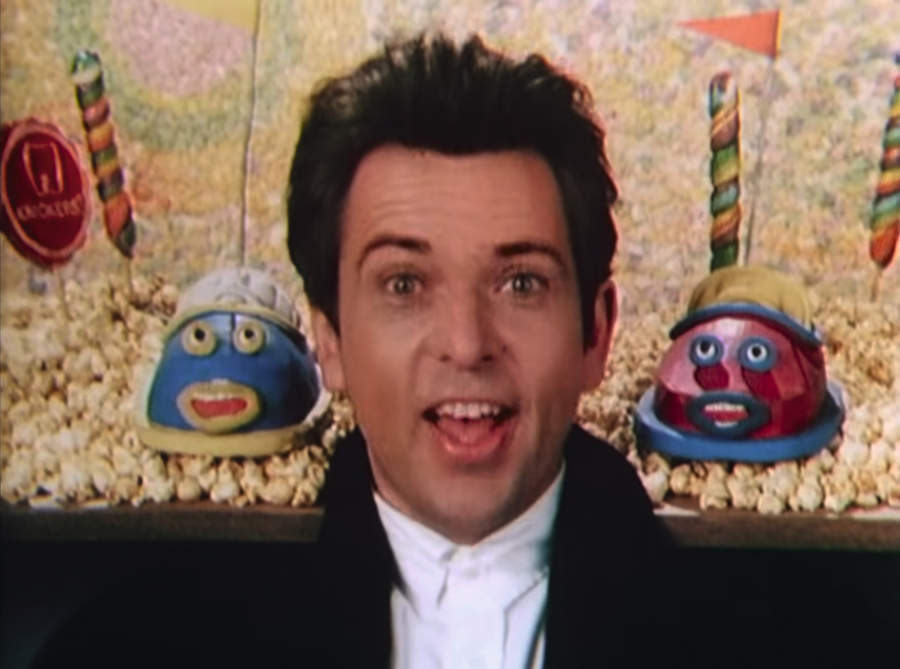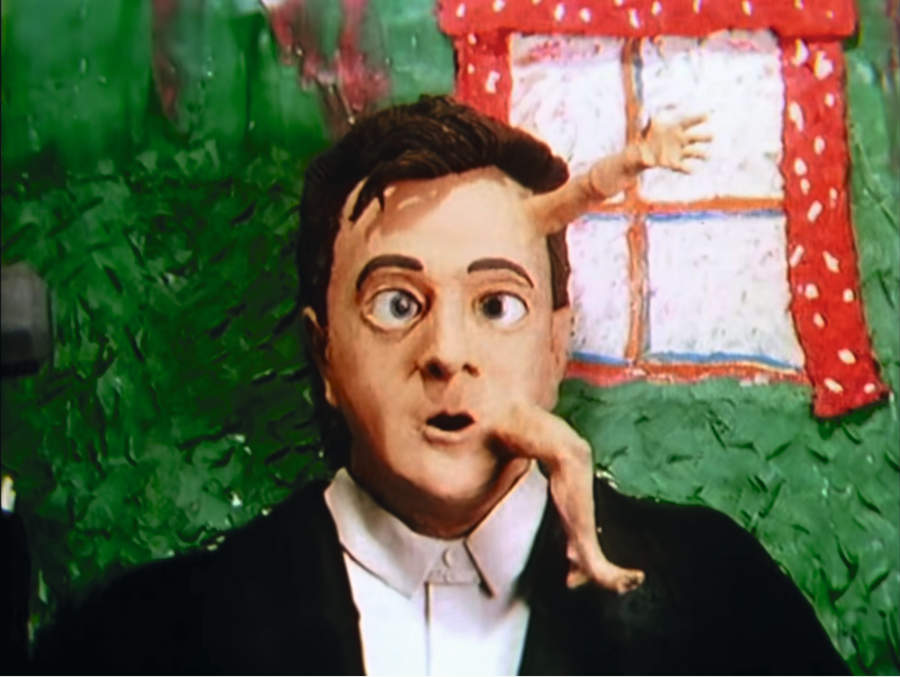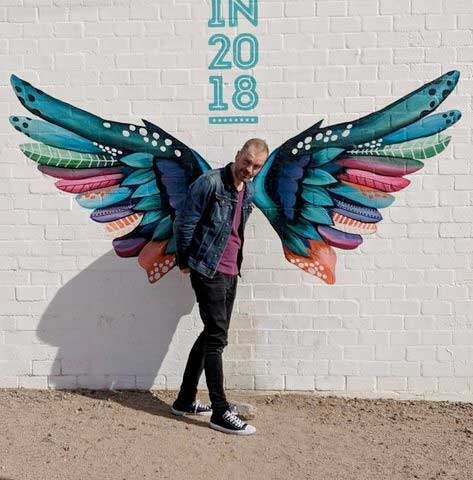10. Metallica - One
Metallica spent most of the 80s stubbornly refusing to make a music video, reasoning that capitulating to MTV would be tantamount to selling out. When they did finally deliver a promo, it was for their powerful anti-war anthem One – and it was made entirely on their terms, and all the more powerful for it.
The song itself was based on Dalton Trumbo’s 1939 novel Johnny Got His Gun, about a limbless WWI soldier who wanted to die, and the video leaned heavily on the 1971 movie version. Moody yet striking footage of the band playing in a vast warehouse was intercut with harrowing clips from the film, while snippets of dialogue provided a ghostly narration.
The video has been played so often that the band reportedly bought the rights to the film to save on royalties. As with so many things they did, it showed that there were two ways of doing things: Metallica’s way, and everyone else’s way
9. Van Halen - Hot For Teacher (1984)
Poor old Waldo. He really wasn’t like other the other kids. But this bespectacled geek provided the flashpoint for the greatest ‘kids take over the classroom’ video ever made.
It’s an absolute riot from beginning to end, whether that's the four teenage Van Halen mini-mes staring bug-eyed as their teacher whips off her day clothes and performs a bikini-clad dance in front of them, the real-life band own rhythmically challenged song-and-dance routine, that lascivious spoken-word breakdown section (“I got my pencil… Now gimme something to write on!”) or the sight of Eddie Van Halen blazing a guitar solo as he stalks along a row of school desks like a panther.
Killer end credits pay off too – although poor old Michael Anthony remains the butt of all Van Halen jokes (“Currently a champion sumo wrestler in Japan” indeed). They were right: our homework was definitely never like this.
8. Foo Fighters - Learn To Fly (1999)
Dave Grohl loves to dress up, and if he’s going to do it, dammit, so are the rest of the Foo Fighters. The unarguable visual high point of their career so far is the video for their soaring 1999 single. A warm-hearted spoof of the Airport disaster movie series, it begins with guest star Jack Black and Kyle Gass of Tenacious D hiding their drugs in an aeroplane’s coffee machine, only for things to go predictably wrong.
Cue a parade of increasingly off-their-rockers characters all played by Grohl and co: a team of swaggering pilots, camp cabin crew, an overweight family, a starstruck teenage girl and, uh, a rock star who looks suspiciously like Dave Grohl.
The frontman is having a blast, although not as much as Taylor Hawkins as a gum-chewing female flight attendant. Why it took the band so long to make their own movie, god only knows.
7. Pink Floyd - Another Brick In The Wall (1979)
The bleakest No.1 single of the 1970s got one of the most harrowing videos ever made. The drab panoramic cityscape and footage of damp, brown alleyways that opens Another Brick In The Wall (Pt 2) screams ‘late-70s urban hopelessness’.
But it’s Gerald Scarfe’s surreal, malevolent visuals that stick in the mind: the hammer-headed headmaster; the vision of school as a mincing machine with the kids as meat; the ranks of fascistic goose-stepping hammers; the towering white wall wrapping in on itself; all repeated over and over again.
By contrast, the choir of kids bathed in demonic red light singing ‘We don’t need no education’ was the closest the whole thing got to light relief. This was the movie inside Roger Waters’s head, brought vividly and unsettlingly to life.
6. Nirvana - Smells Like Teen Spirit (1991)
A different vision of school as Hell, albeit one that looked a lot more fun than anything Roger Waters and Gerald Scarfe cooked up. Samuel Bayer’s video for Nirvana’s career-making single subverted the high-school pep rally, turning it into an anarchic free-for-all complete with slow-motion cheerleaders, and kids storming down from the bleachers (including future Fear Factory singer Burton C Bell) while a janitor keeps time with his mop like a human metronome.
Kurt Cobain’s face is obscured almost all the way through, either by the demonic sepia-tinged lighting or his own lank fringe – ironic, given how famous he became (he insisted on the leering close up at the end).
The mini-riot that ends the clip was a product of dozens of kids being forced to sit in their seats all day: actively encouraged by Cobain, it pretty much foreshadowed what was just around the corner for Nirvana.
5. Twisted Sister - We're Not Gonna Take It (1984)
“Whaddya wanna do with your life?!” “I wanna rock!” If ever MTV metal had a clarion call, the pay-off at the end of the extended intro to Twisted Sister’s greatest video provided it.
The channel was invented for Dee Snider and co, and the video for their classic 1984 anthem saw these New York club veterans embracing the medium wholeheartedly. Animal House star Mark Metcalf played the ultimate repressive suburban dad with gritted-teeth glee, watching his teenage son transform into a Snider-shaped mass of hair and eyeliner, then hopelessly attempting to stop these long-haired deviants from rampaging through his house like the most terrifying RuPaul’s Drag Race contestants ever.
Sure, in the cold light of day it’s funny that this generation-gap anthem came from a bunch of men pushing 30 and beyond, but let’s not split hairs – socking it to the grown-ups has never looked so much fun.
4. ZZ Top - Gimme All Your Lovin’ (1983)
The opening salvo in the so-called ‘Eliminator trilogy’ of videos that helped turn these three Texas fur balls into the most unlikely stars of the early MTV era. The plot is utterly nonsensical: a put-upon car mechanic is temporarily saved from his life of drudgery by a gang of lissom models in a pillar-box-red Ford coupe while a dust-covered ZZ Top kick out the song in the garage forecourt alongside them.
But plot, schmott. This is pure fantasy (hot women rescue guy!), not to mention some of the greatest visual iconography ever committed to video, from the heat haze on the desert road as the hot-rod approaches, to the band’s synchronised pointing as it passes. The band would run with the idea on followup singles Sharp Dressed Man and Legs, but this remains the original and best
3. Queen - Bohemian Rhapsody (1975)
The one that started it all? Maybe not, but certainly the one that turned the format into both a marketing tool and a visual art form, forever imprinting the idea of the ‘promotional clip’ on the public consciousness.
The backstory has passed into rock’n’roll lore: shot in four hours at a cost of £4,500 in order to save the band having to appear on Top Of The Pops. What’s often forgotten is just how much of the clip is straight performance, but it’s the bits that aren’t – based on Mick Rock’s cover for 1974’s Queen II album, itself inspired by an old Marlene Dietrich photo – that are burned into the collective memory: an artfully arranged image of the band, shot in German Expressionist-influenced shadows-and-light, manipulated into kaleidoscopic forms with primitive yet magisterially effective visual technology.
The video was part of the reason that Bohemian Rhapsody remained at No.1 in the UK at the end of 1975 and into 1976, and repositioned Queen themselves as genuine innovators and newly crowned rock royalty. Truly, things would never be the same again.
2. Guns N' Roses - November Rain (1992)
The fact that Donald Trump (remember him?) called November Rain “the greatest video of all time” should surprise no one – when it came to delusions of grandeur, the one-and-done former president was matched only by Axl Rose in his prime.
November Rain was the singer’s years-in-making magnum opus, and it received the video it deserved: a visually stunning, utterly incoherent nine-minute clip that cost upwards of $1.5 million (still $3.5 million cheaper than the lesser promo for Estranged, mind).
Ostensibly based on a short story by Axl sidekick Del James, and starring the singer’s real-life wife-to-be Stephanie Seymour, it played out like the world’s most expensive wedding home video, intercut with scenes of the band and orchestra playing at LA’s Orpheum Theater. Yet for all Axl’s hubris, it’s Slash who steals the show, exiting the opulent marriage ceremony and suddenly finding himself outside a tiny white chapel in the middle of the desert, where, naturally, he peels off a solo with a guitar that’s materialised out of nowhere.
The whole thing is utterly bonkers, borderline hilarious and strangely moving at the same time. They don’t make ’em like this any more. In fairness, they didn’t back then either.
1. Peter Gabriel - Sledgehammer
What’s the most memorable image from the video that helped transform Peter Gabriel from art-rock linchpin into a genuine global superstar? Is it the toy train spinning around a winking, blinking Gabriel? Is it the singer being enveloped by a swirl of circling fruit? Is it the pair of mildly disturbing dancing chickens high-kicking along to the song?
“The director, Stephen Johnson, said: ‘I want some chickens,’” says Dave Alex Riddett, camera operator on the shoot for Gabriel’s 1986 single Sledgehammer, the most dazzling and inventive promo of the past 50 years. “We said: ‘Okay, we’ll make some fake chickens.’ And he went: ‘No, no, I want some real chickens.’ I think Nick Park, who spent two or three days animating the chickens under hot lights, was quite fearful that he was going to get salmonella poisoning.”
Riddett and future Wallace & Gromit creator Park were working for fledgling animation house Aardman when Gabriel presented the company with an idea he and director Johnson had for a stop-motion promo for the first single from his fifth solo album, So.
“It’s called ‘pixilation’, which is basically animating a human being,” says Riddett. “Rather than setting up a puppet and filming it each time you move it, you do it with a person. You get them to break down their movements into fractions of a second. So we’d paint the sky on Peter’s face one frame at a time, and film it.”

It wasn’t the first time the technique had been used in a music video. Gabriel had borrowed the idea from a segment in the clip for Talking Heads’ Road To Nowhere, directed by Johnson the previous year. But Sledgehammer extended the idea across the whole video, presenting a stream of images that were striking, surreal and occasionally disturbing.
Aardman enlisted US experimental filmmakers The Brothers Quay to help create the models that would appear in the videos. The shoot itself took six intense days, a chunk of which involved Gabriel sitting in an old cinema chair that Riddett had converted with the addition of a neck brace (“to keep his head static”) while the models were moved around him in real time.
At another time, Gabriel lay under a pane of glass for 16 hours to shoot the part of the video where he’s slowly covered by wooden panels and doors. “I don’t think he realised how much energy he needed to put into it,” says Riddett. “But he was great about it. It was his idea after all.”

Being stuck behind the camera meant that Riddett missed out on a cameo in the video, unlike his colleagues who appeared as part of the jerkily hypnotic dance scene that concludes the it (Gabriel’s daughters Anna-Marie and Melanie are in there too). “We built a whole big set,” Riddett says of the latter. “If you look behind him, the actual scenery is dancing – the wallpaper is changing.”
The final five-and-a-half minute video stands as a work of eccentric visual genius, and one of the defining promos of the video era. Riddett says it put Aardman on the map, while Gabriel acknowledged the part it played kicking his career on to the next level. “I’m not sure that it would have been as big a hit, and I certainly don’t think the album would have been opened up to as many people, without the video,” he told Rolling Stone.
For Riddett, it’s the combination of energy, invention and sheer maverick spirit that makes the Sledgehammer video so iconic. “It’s the slight lack of sophistication,” he says. “You could almost see the joins – that was a very important thing. It had that energy to it. You could almost see how it was made, but then you’d also think: ‘Well, somebody’s gone to a lot of effort.’ Particularly poor old Peter."
